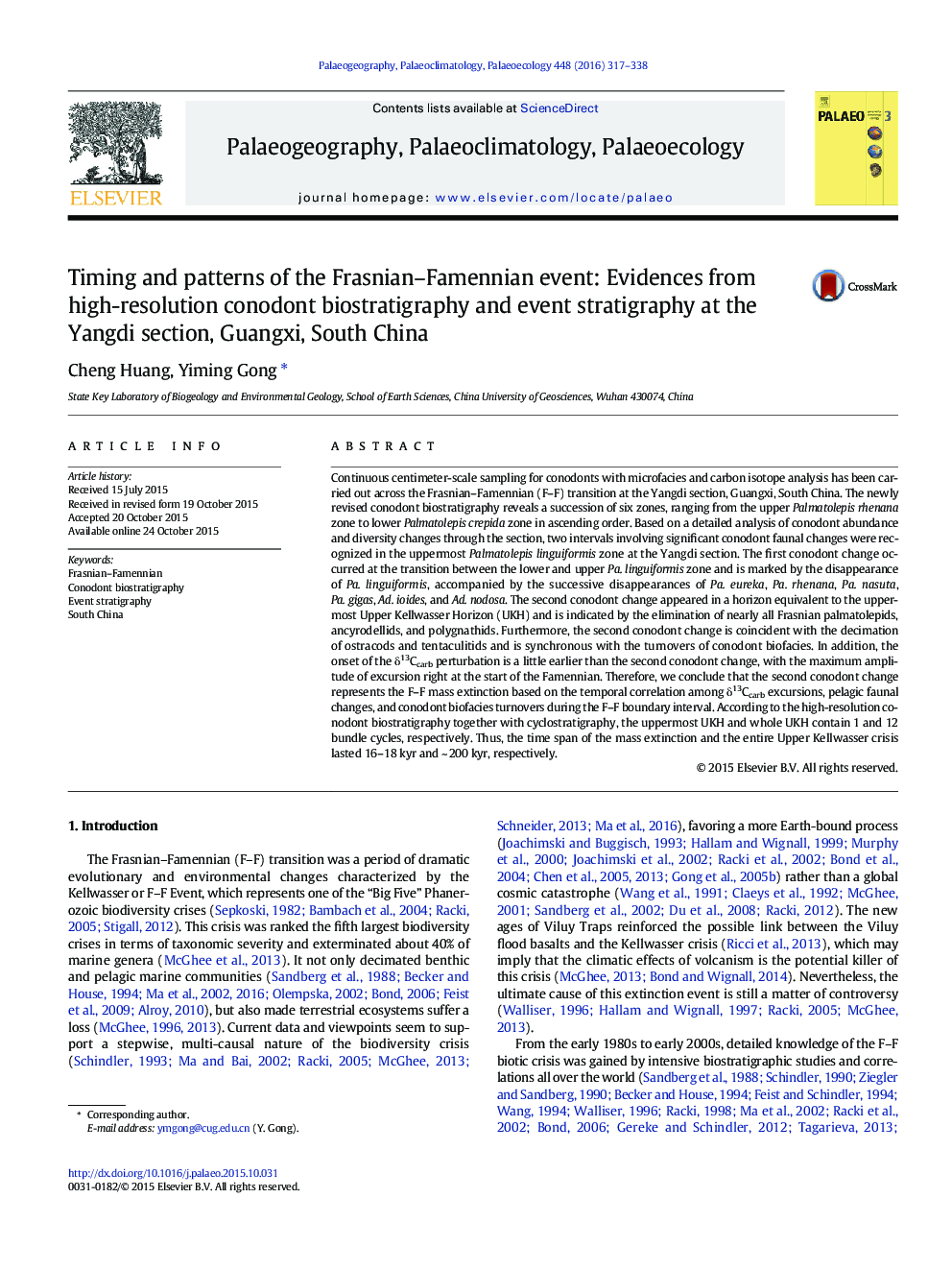| Article ID | Journal | Published Year | Pages | File Type |
|---|---|---|---|---|
| 4465856 | Palaeogeography, Palaeoclimatology, Palaeoecology | 2016 | 22 Pages |
•F–F high-resolution conodont biostratigraphy and biofacies was erected in South China.•Two conodont changes with ostracod and tentaculitid turnovers were recognized.•The Upper Kellwasser Horizon was first precisely dated in South China.•The durations of the entire UKH and F–F mass extinction were estimated.
Continuous centimeter-scale sampling for conodonts with microfacies and carbon isotope analysis has been carried out across the Frasnian–Famennian (F–F) transition at the Yangdi section, Guangxi, South China. The newly revised conodont biostratigraphy reveals a succession of six zones, ranging from the upper Palmatolepis rhenana zone to lower Palmatolepis crepida zone in ascending order. Based on a detailed analysis of conodont abundance and diversity changes through the section, two intervals involving significant conodont faunal changes were recognized in the uppermost Palmatolepis linguiformis zone at the Yangdi section. The first conodont change occurred at the transition between the lower and upper Pa. linguiformis zone and is marked by the disappearance of Pa. linguiformis, accompanied by the successive disappearances of Pa. eureka, Pa. rhenana, Pa. nasuta, Pa. gigas, Ad. ioides, and Ad. nodosa. The second conodont change appeared in a horizon equivalent to the uppermost Upper Kellwasser Horizon (UKH) and is indicated by the elimination of nearly all Frasnian palmatolepids, ancyrodellids, and polygnathids. Furthermore, the second conodont change is coincident with the decimation of ostracods and tentaculitids and is synchronous with the turnovers of conodont biofacies. In addition, the onset of the δ13Ccarb perturbation is a little earlier than the second conodont change, with the maximum amplitude of excursion right at the start of the Famennian. Therefore, we conclude that the second conodont change represents the F–F mass extinction based on the temporal correlation among δ13Ccarb excursions, pelagic faunal changes, and conodont biofacies turnovers during the F–F boundary interval. According to the high-resolution conodont biostratigraphy together with cyclostratigraphy, the uppermost UKH and whole UKH contain 1 and 12 bundle cycles, respectively. Thus, the time span of the mass extinction and the entire Upper Kellwasser crisis lasted 16–18 kyr and ~ 200 kyr, respectively.
